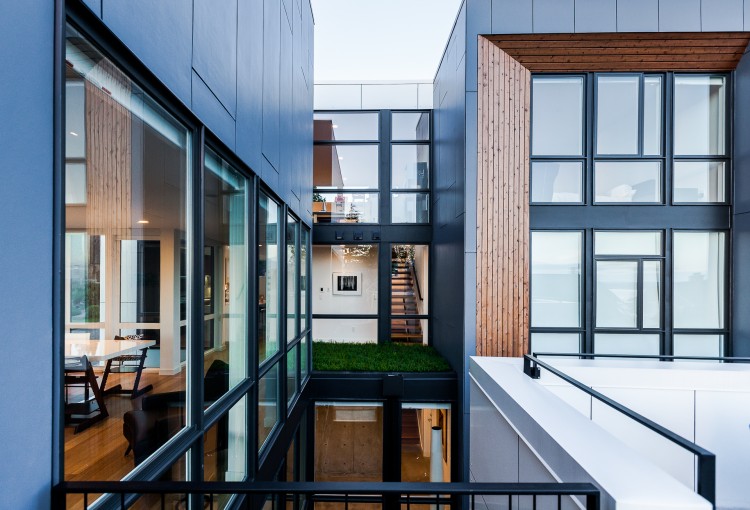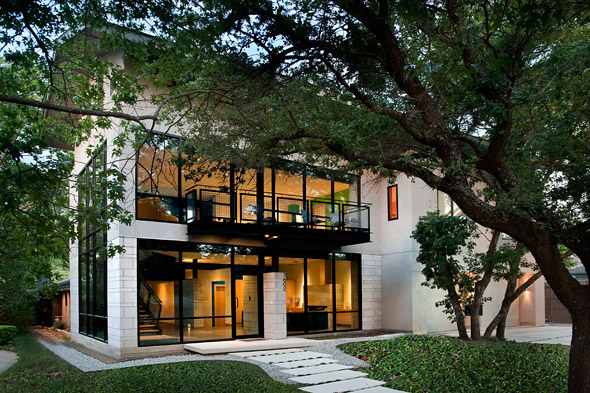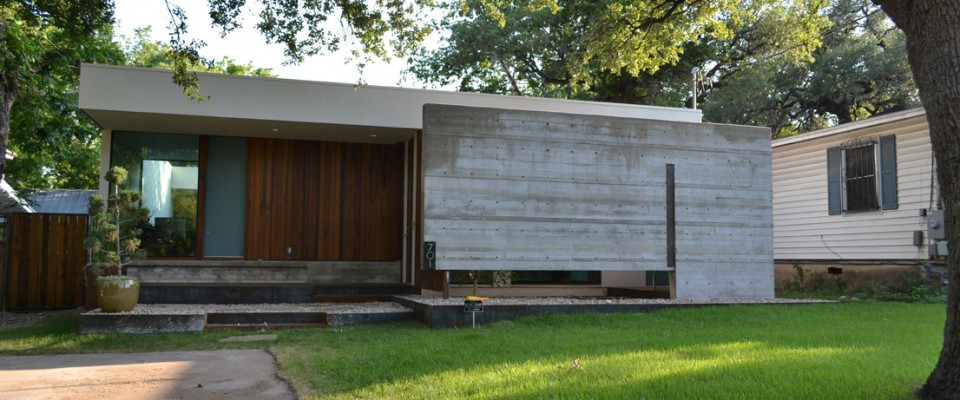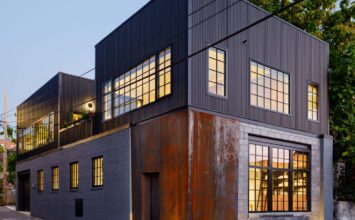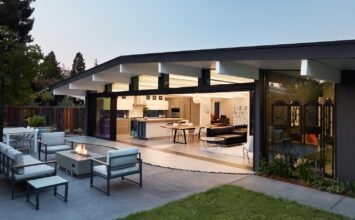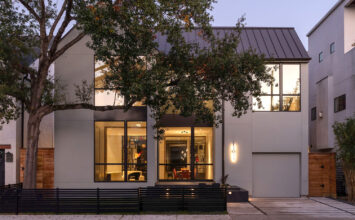We’re returning to highlight and enjoy an exciting day touring some of the finest examples of modern architecture in Seattle! Check back often as new homes will be as they are confirmed!
DATE: Saturday, May 2, 2015
TIME: 11:00am – 5:00pm
COST: $30 Online in advance, $40 Day of
LOCATION: A link to the tour homes’ locations will be posted here
TRANSPORTATION: Self-driving, Self-paced.
Advance tickets are on sale through FRIDAY, May 1 at 8:00 PM for $30 each. Tickets purchased after that time MUST be purchased at any of the tour homes beginning at 11:00 am on May 2 for $40 each. Children 12 and under are free.
Featured Homes
A) 813 19th Ave S, Seattle, WA
Architect: Thomas Schaer – SHED Architecture & Design
Located in a central but marginal Seattle neighborhood, the Backyard House is a speculative infill development that takes its name from its site—the subdivided backyard of an existing single family house. The projects fundamental objective, to build an affordable house suited to a broad range of potential buyers, resulted in a program that emphasized economical construction, long term operational efficiency, a limited palette of durable materials, and the creation of bright, naturally lit spaces integrated with the site and views.
The house is situated on the western half of the lot on the edge of a bluff and reached via a driveway that runs through the side yard of the existing house. A mandated parking area that accommodates two cars and common infrastructure such as garbage, recycling and exterior storage creates a buffer between the houses.
At the ground floor a series of platforms step down through the interior to define distinct program elements and then re-emerge from the house as a terrace at the edge of the bluff. The intent was to enable inhabitants to experience the topography and for space to flow organically down through the building and its compact site. To define enclosure on these platforms, wall planes and infill glazing are organized to create a sense of both prospect and refuge within the house and site, as well as maximizing access to light in all rooms. A large kitchen window and porch engage the street, and floor to ceiling glazing in the dining and living rooms opens to the western terrace and to the view. Primary walls extend beyond the glazing to focus views and extend the threshold between inside and out. Walls, openings and platforms combine to create interconnected spaces that are open and protected, expansive and secluded.
The wood framed structure on concrete slab foundation contains living spaces, a small office, 3 bedrooms, and 2.5 baths on two floors totaling 1960 SF. The stacked stair continues to the roof level where a storage attic and roof terrace is located. The house provides basic amenities such as clear room planning with access to light, ample storage, and spaces that accommodate basic furniture layouts. Program elements were added or combined in small ways to improve use and function, including a large laundry zone in the second bathroom and an entry bench and mail/phone counter at the main entry. The result is a compact and efficient house that feels generous and integrated with its site and surroundings.
Project detailing and materials were direct, durable and economical. Exterior walls were clad with painted Fiber Cement Panels with areas of wood infill. Aluminum windows were used both for long term durability and to maximize glazing area for interior space. Sheetrock and traditionally detailed wood trim, all painted white, form the low cost background of the interior. The Ikea kitchen cabinets are topped by a counter and backsplash of Milestone cement veneer, a material also used extensively in the bathrooms. Aluminum trim was used at all window sills and mullions and wood paneling was used in the living room to add warmth and to impart a sense of refuge to the space. In every aspect the house strived for maximum design impact with a minimum number of materials and custom details.
Finally, the Backyard house incorporated common sense and affordable, sustainable materials and methods. The structure itself employed advanced framing to reduce wood usage by +/- 30% in combination with BIBS insulation to achieve a thermally efficient envelope. Additional solutions include the use of the stairwell and roof terrace access as a passive cooling and ventilation strategy through the stack effect. In combination with in-floor / radiator hydronic heat, a heat recovery ventilation (HRV) system ensures an efficient heating and ventilation system. Low/no VOC paints and finishes were used exclusively to exceed indoor air quality standards, while dual-flush toilets, Energy Star appliances, were used to minimize water and energy usage over the long term.




B) 4117 W Barrett St, Seattle, WA
Architect: Chris Pardo
Aurea Residence is a modern home built in the Magnolia area of Seattle. architect, Chris Pardo, maximized the view to build a stunning modern twist to the area.




C) 1104 18th Ave, Seattle, WA
Architect: Tiffany Bowie AIA, CPHC® – Malboeuf Bowie Architecture
Located on a narrow, sloping lot within a dense urban residential neighborhood of Seattle. The project embraces what we consider the three basic principles of good design:
1.Abundant natural light and ventilation;
2.Small spaces that live large;
3.Indoor/Outdoor integration.
The architect/developer team decided to build three units, keeping one unit for their home and office, while selling the other two. Placing three units and parking on the narrow sloping lot provided the greatest challenge. Each unit needed abundant natural light, ventilation, privacy and access to views. Furthermore, the units have small footprints, which was beneficial for energy efficiency, yet required problem solving to achieve our three main design principles.
The architects felt that creating large volumes and plenty of light would create living spaces that felt larger. They achieved this by using high ceilings and expansive high-performance glazing on the east and west ends of the building. The middle unit posed the greatest design challenge. A heavily glazed, and slightly recessed stair tower was designed to allow natural light to flood into the unit on all three levels while maintaining privacy for the occupants. The lower floor of the middle unit has an in ground planter integrated in the concrete slab. The tall bamboo tree was a playful way of providing an indoor/outdoor connection in a very small space.
Providing functionality and flexibility within small spaces was an additional challenge faced by the architects. This was achieved with open living plan on the middle floor and two smaller bedrooms on the lower floor that could be joined into one space, or used as offices or guest rooms.




D) 843 NE 100th St, Seattle, WA
Architect: James Chiarelli
Designed and constructed between 1948 and1950 by notable Pacific Northwest architect James Chiarelli as his personal residence, this home is a model of simplistic beauty. It’s strategically sited to create privacy from the street while floor-to-ceiling window walls along the back frame views of the immense, wooded, magical backyard. With the main floor slightly cantilevered from the foundation (a Chiarelli trademark), the house appears to float above the landscape. Spaces are defined by freestanding elements, while black terrazzo floors with flecks of abalone shell create continuity. The master bedroom is in its own wing of the L-shaped floor plan, allowing for windows on three sides to bring the outside in. A generous use of wood and reflective lighting create warmth and ambience. The current owners, Craig McNary and Adeline Ee, who purchased the house from its second owners, the Dore Family, spent a year fastidiously restoring and updating the home. McNary and Ee were incredibly sensitive to Chiarelli’s original vision and honored the aesthetic of the home during renovations – while modernizing several key living spaces, and preparing it for the next 60 years of life. The home is listed in the National Register of Historic Places (2012), the Washington Heritage Register (2012), and as a City of Seattle Landmark (2014).



E) 3332 E Ford Pl, Seattle, WA
Architect: Geoff Prentiss – Prentiss Architects
Perched atop a lush hillside in the Washington Park neighborhood of Seattle, this home underwent an extensive remodel in 2007 to reflect the owners’ desire for a livable contemporary.
Completed in 12 months, the result is a comfortably grand and artistic “tree-house”, boasting a number of sustainable choices including solar-heated water. Modern design is elegantly balanced with a few cherished existing design elements like a classic fountain and formal fireplace mantel. High quality, environmentally friendly and healthy materials are employed throughout. In the kitchen, the cabinets are crafted of bamboo, hand-troweled Milestone covers the main countertop surfaces, and Alkemi (a solid surface material composed of recycled aluminum) tops the island. A full-height Nana window wall and ridge skylight floods the main living area with natural light and offers a view of Mt. Rainier from the dining table.
During the warmer months, the house transforms: the main space opens on two sides to extend out into the landscape – one side to the new cantilevered deck, the other to the rear terraced garden and surrounding bamboo forest. When the wall of folding doors is opened, the sound of birds fills the space. In the winter months, the two-sided gas fireplace floods the rooms with glowing warmth.




F) 1233 21st Ave E, Seattle, WA
Architect: Eric Cobb – E. Cobb Architects
“Dutch Light”
At the essential core of Modern Architecture, light and surface shape interconnected spaces. It is first and foremost about space.
The exterior of this well-appointed 1920 Dutch Colonial clearly falls outside of a modern aesthetic, however, a new set of pure modern alterations has changed the fundamental nature of this traditional home. Well-appointed traditional rooms and details sit side-by-side with uncompromised modern space, creating a rich set of experiences that offer warmth, intimacy, openness and vitality. The modern alterations infuse the entire house, traditional and modern, with modulated natural light.
The 1920 Dutch Colonial held a distinctive character on the Capitol Hill block of traditional homes. With its gambrel roof profile (interestingly turned perpendicular to the typical orientation), expansive sun room facing the street, and side entrance, the exterior of the house promised an equally distinctive interior. Inside, broad, generous tradition living spaces, detailed with dark mahogany trim, defined half of the first floor. However, moving towards the rear of the house, the interior spaces became smaller, darker, and increasingly less inviting. The house was effectively cut-off from the rear yard.
The modern design strategy in this project focused on a carefully selected set of subtractive operations, intending to invert the balance of light and darkness within the house. The darker, interior spaces were to become the most open, light-filled, and active spaces of the house. Upstairs, capturing the remarkable profile of the Dutch Colonial gambrel, the bed, bath and halls spaces also become light, bright and voluminous.
“Dutch Light” poses a residential architectural proposition that is rare in American cities, but common throughout Europe. Distinctive, well built, traditional architecture can not only co-exist comfortably with pure modern architecture, but, in fact, the two can work hand-in-hand to make the character of each more pronounced and vital.
In this project type, the complex balance between Modern and Traditional is balanced to fit each home, site and owner.








